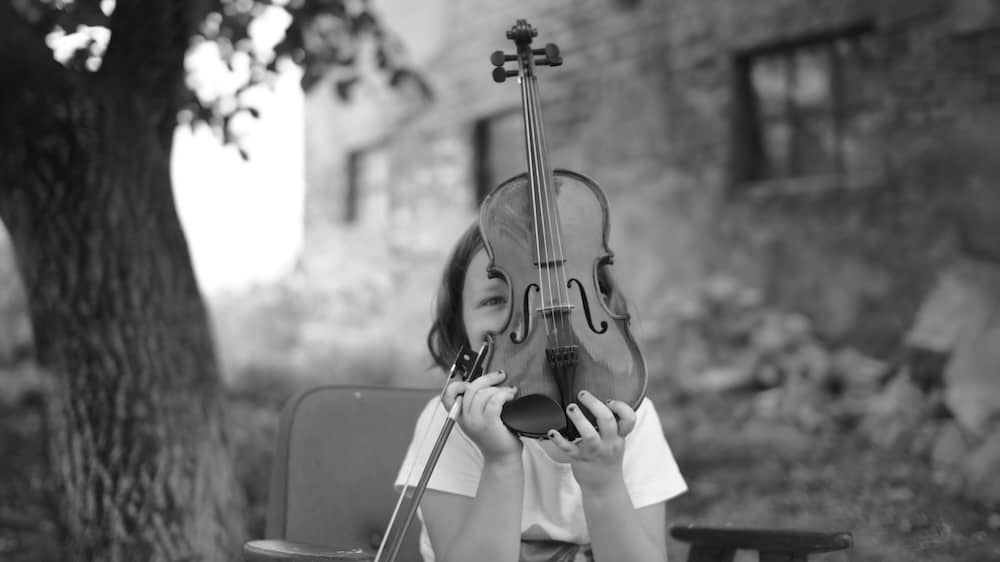Teaching Beginning Violinists with Joy and Structure
I've been teaching violin for more than 25 years and many of my students have been complete beginners. What teaching beginners has taught me is that the first steps on the violin are never just about the violin. They are about learning to trust one’s body, one’s imagination, and the belief that "I am capable of this."
When a child enters the studio for the first time, they are full of curiosity, potential, and often a little uncertainty.

How we respond shapes not only their technique, but their identity as a musician. I think our goal has to be to guide them with joy and structure, so they can develop both freedom and confidence from the very beginning.
What has served my students best over the years is a sense of predictability, wrapped in play. A consistent lesson flow tells them, "You are safe here. You know what comes next." We always begin by connecting — movement that loosens the body, a rhythm game, or simply noticing our breath.
This sense of grounding is what eventually becomes posture. Only when they feel comfortable do we explore one focused skill. Beginners don’t need more information; they need space to truly absorb what matters. Ending the lesson with something they can proudly repeat at home gives them a small but powerful success to carry with them. Progress becomes part of their identity.
As teachers, we know how quickly tension can steal the joy from a first lesson. Instead of showing the "right" posture visually and asking for imitation, I try to give children physical experiences that guide them into relaxed alignment. To help the left arm understand its role, we imagine holding a little bird. To free the bow hand, we play with pencils and paintbrushes before touching the instrument. When technique is tied to imagination, the body remembers what it enjoys.
Musicality, too, should begin at once. A beginner does not arrive hoping to master wrist flexibility, they want to make music! So I invite them to shape even the simplest sound with intention. One pizzicato note can whisper or giggle. One open string can dance or sigh. When a child feels they are expressing something, they naturally explore dynamics, tone, and phrasing — long before they can define those words. Musical desire leads technique forward.
Perhaps one of the most underestimated aspects of teaching beginners is communication with parents. They care deeply, but sometimes anxiety makes them focus on the wrong things: speed, difficulty, comparison. I try to give parents tiny, achievable missions they can support: "Stand like a violinist for ten seconds today," or "See how softly you can land the bow." When parents understand that small consistency matters more than heroic effort, the home environment becomes a continuation of confidence rather than a source of pressure.
Finally, sustaining beginner joy requires that we, too, remain joyful. Beginners ask for our creativity, patience, and presence every moment — and that can be demanding. The more tools we have ready, the more freedom we feel to respond to what the student truly needs. When we protect our own energy, we are better able to notice the spark in a child’s eyes and help it grow.
If I could offer one piece of encouragement to any teacher working with a student at their very first stage, it would be this: aim for the feeling they walk away with. A child who leaves thinking, "This is fun," and "I can do it," has made the most important technical progress of all. The rest will come — with patience, good guidance, and a learning environment where structure makes room for joy.
A child who feels they belong with the violin will choose to stay. And that is where everything begins.
You might also like:
- Practice Videos for Beginning Violin Students
- How to Succeed as a Beginning Violin Student
- Starting on the Violin as an Adult Beginner: What to Expect
* * *
Enjoying Violinist.com? Click here to sign up for our free, bi-weekly email newsletter. And if you've already signed up, please invite your friends! Thank you.
Replies
Thank you so much for your kind words! You’re absolutely right — those first teachers shape everything that comes after. When the beginning is filled with curiosity, joy, and solid foundations, students can grow with freedom and confidence. And the opposite is just as true — if those early steps aren’t well guided, it often takes years to undo the struggle. I’m so glad this message resonates with you!
This article has been archived and is no longer accepting comments.
Violinist.com is made possible by...
Dimitri Musafia, Master Maker of Violin and Viola Cases
International Violin Competition of Indianapolis
Johnson String Instrument/Carriage House Violins
Subscribe
Laurie's Books
Discover the best of Violinist.com in these collections of editor Laurie Niles' exclusive interviews.

Violinist.com Interviews Volume 1, with introduction by Hilary Hahn

Violinist.com Interviews Volume 2, with introduction by Rachel Barton Pine








October 28, 2025 at 08:06 AM · I love your pedagogy! Throughout education, so much praise and recognition is showered upon the final teachers, but without the talented inspiration and instruction of those who really help beginners onto the path there simply would be nothing to work with later. Thank you Inés, for a great blog.